Every community and culture has religion as an essential component. It is critical to forge our ties to the divine and grow our understanding of the ultimate force that governs our daily acts, instills morality, and teaches us virtue.
If the secrets of ancient traditions and vibrant cultures create a sense of wonder in you, you can learn about Iranian culture in detail in this article.
There are major disparities in religious beliefs and practices, and religion serves diverse purposes in different people’s lives. To avoid making social faux pas that make you or others feel uncomfortable or insulted, it is crucial for tourists to be aware of the background and significance of the numerous religious traditions and beliefs of their destination before they visit. We will discuss different religions in Iran in this article along with the percentages of their followers.
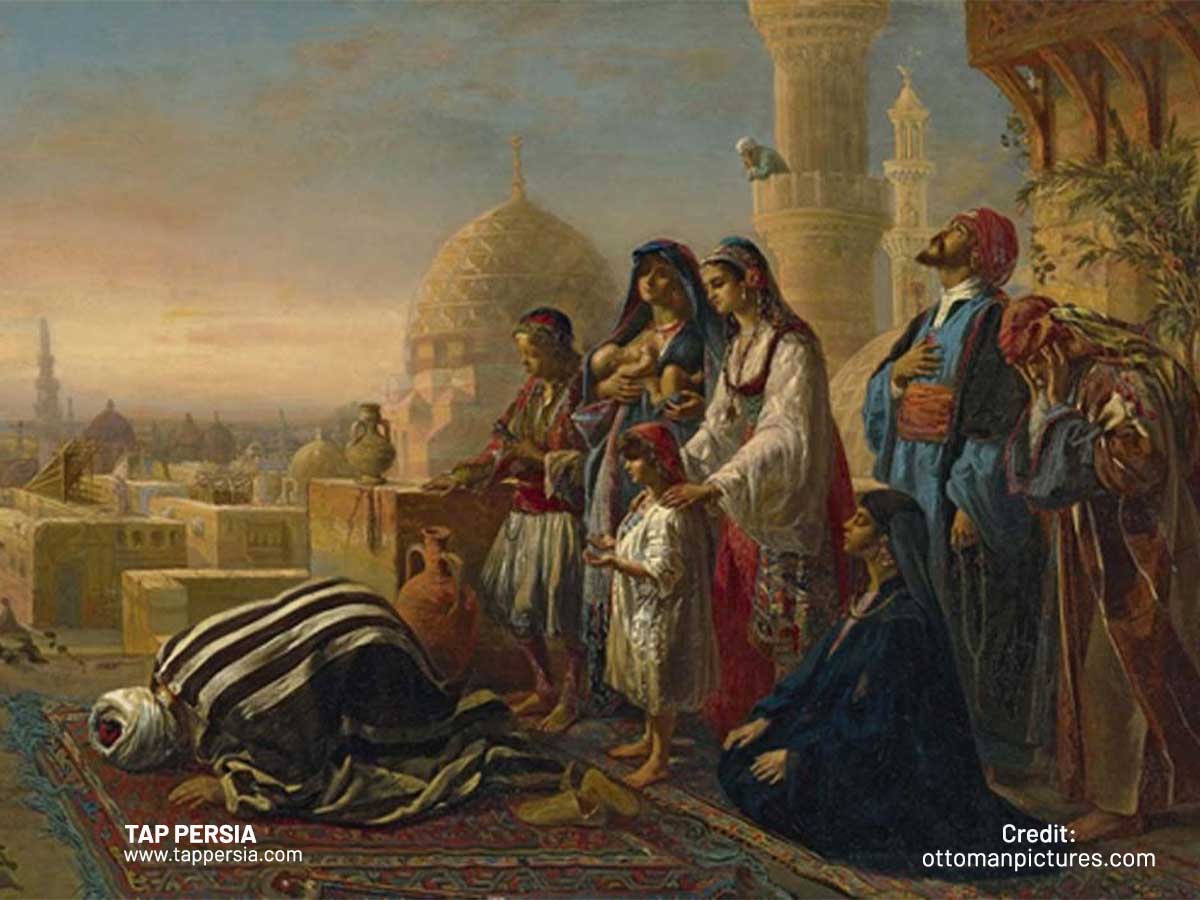
I. Islam in Iran: The Dominant Religion
When talking about religions in Iran, the most important one in the nation is Islam. After the Islamic conquest of Iran in 640 AD, Islam has been the recognized state religion and a component of Iranian governments. It took a further few centuries for Shi’a Islam to consolidate and rise to dominance in Iran on both a religious and political level. Although there have been Shi’a dynasties in some regions of Iran since the 10th and 11th centuries, and Shi’as have resided in Iran from the beginning of Islam, according to Morteza Motahhari, the bulk of Iranian intellectuals and the general populace have always been Sunni. Shi’a (also known as Shi’ite) Muslims make up the majority of Muslims, with Sunni Muslims making up about 5–10% of the population.
-Shi’a Islam
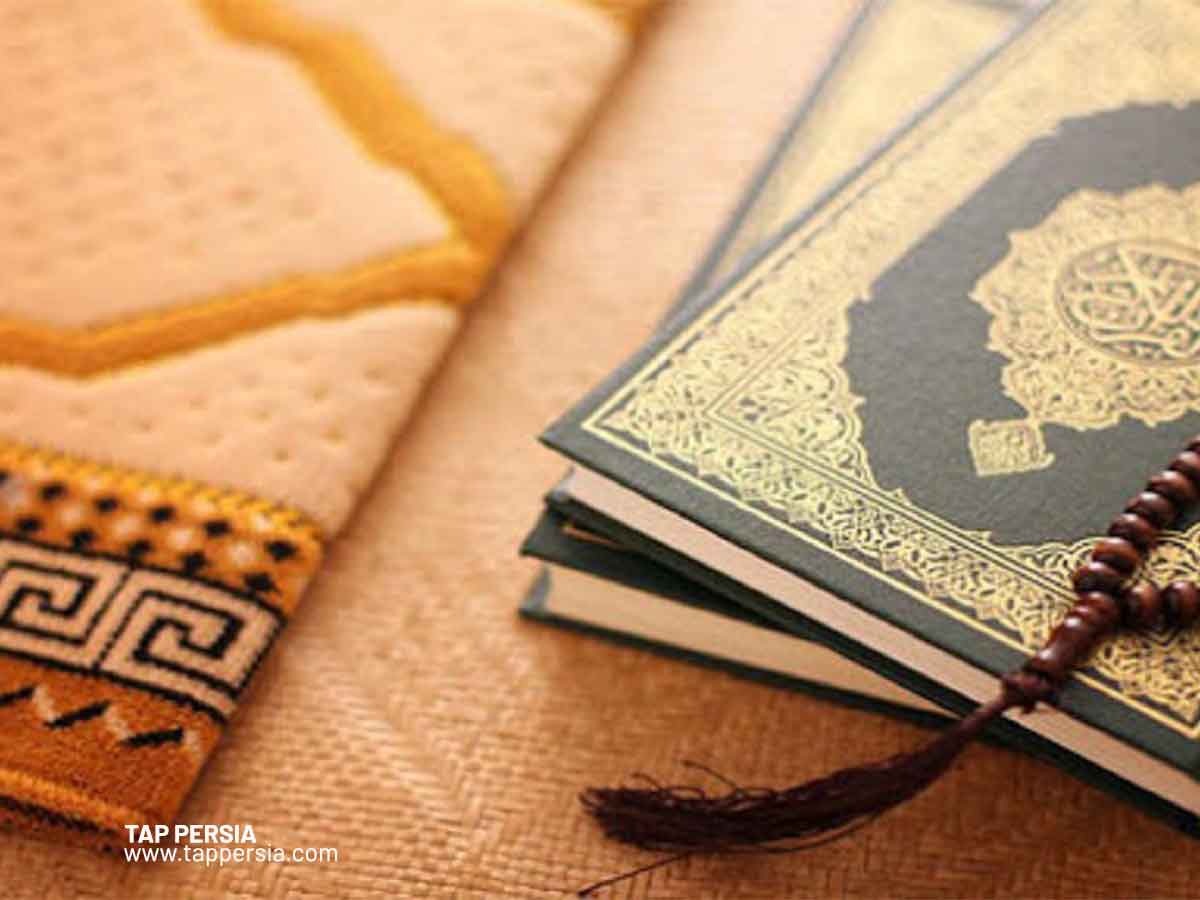
98% of Iranians identify as Muslim and 89% of them are Shi’a. There are several sects of Shi’a Islam. The Twelver Shi’a sect is the most prominent. The Nizari Ismailism Shi’a, often known as Seveners, is the second-largest Shi’a sect. The names Twelvers and Seveners come from their conviction that the Islamic prophet Muhammad (S.A.W.A.) and his daughter Fatimah (A.S.) and son-in-law ‘Al (A.S.) are direct descendants of each other. The Shia Imams are regarded as infallible and the foremost experts on Islam and the Qur’an. They are regarded as the most reliable transmitters, guardians, and models of the Prophet Muhammad’s customary behavior.
Only Imam Ali ar-Ridha (765–818 AD) has been buried in the Imam Reza shrine in Iran out of all these Imams. Imam Ja’far as-Sadiq (A.S) founded the Jafari school of thought, which is the main school of belief, practice, and law (Madhhab) in Shi’a Islam.
-Sunni Islam
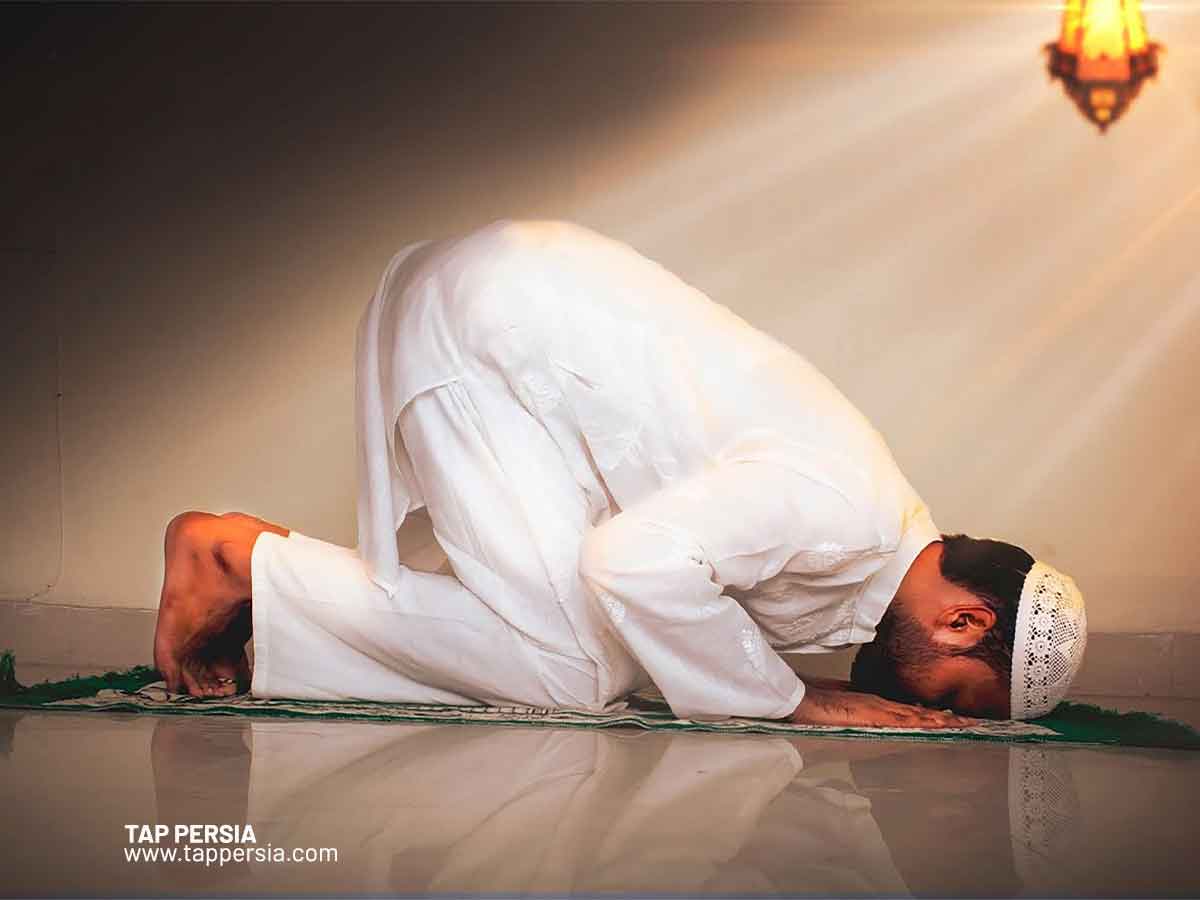
The second-largest religious group in Iran is Sunni Muslims. After the Ghaznavids, who ruled Iran starting in 975 AD, the Great Seljuq Empire, the Khwrazm-Shh dynasty, and so on until the Mongol invasion of Iran, it came to reign there. About 9% of Iranians identify as Sunni Muslims, with the majority living in the northwest, followed by Kurds in the southwest and southeast, Arabs in the southwest, Baloch in the southeast, and Pashtuns and Turkmen in the northeast.
The Hanafi School, founded by Abu Hanifa an-Nu’man, is the preeminent school of theology and law (Madh’hab) among Sunnis in Iran.
II. Christianity in Iran
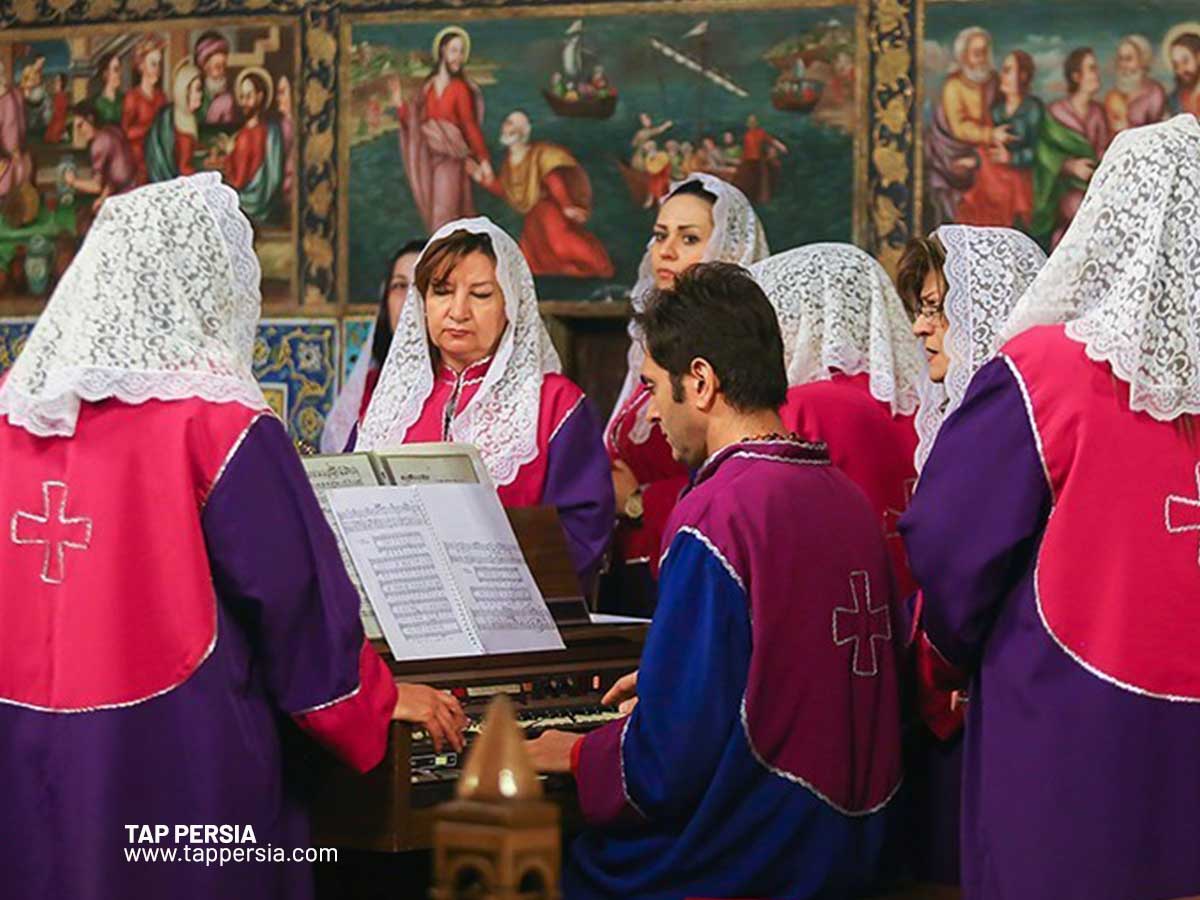
The two dominant state faiths, Shia Islam today and Zoroastrianism in the past, cast a shadow over Christianity, making them important religions in Iran. However, Christianity has been practiced in Iran from its inception and has a long history there. Iran has a few historic churches. The Tatavous Vank, also known as the Ghara Kelissa, otherwise known as the black monastery, is the oldest and most popular. It is located south of Makou City. Of the estimated 300,000 Christians in Iran, Armenians make up the largest and oldest Christian group with over 200,000 people.
III.Judaism in Iran

Judaism, which has its roots in late biblical times, is among the oldest religions in Iran still being practiced by its people. The lives and experiences of Jews in Persia are mentioned in Chronicles, Daniel, Nehemiah, Isaiah, Esther, and Ezra in the Bible. Of all the Muslim nations, Iran boasts the highest Jewish population. With an estimated 25,000 Jews, Iran is by far the Muslim nation with the greatest Jewish population (estimates range from 11,000 to 40,000). The World Jewish Library reports that Shiraz, Isfahan and Tehran are home to the majority of Iran’s Jews.
IV. Zoroastrianism: The Ancient Religion of Iran
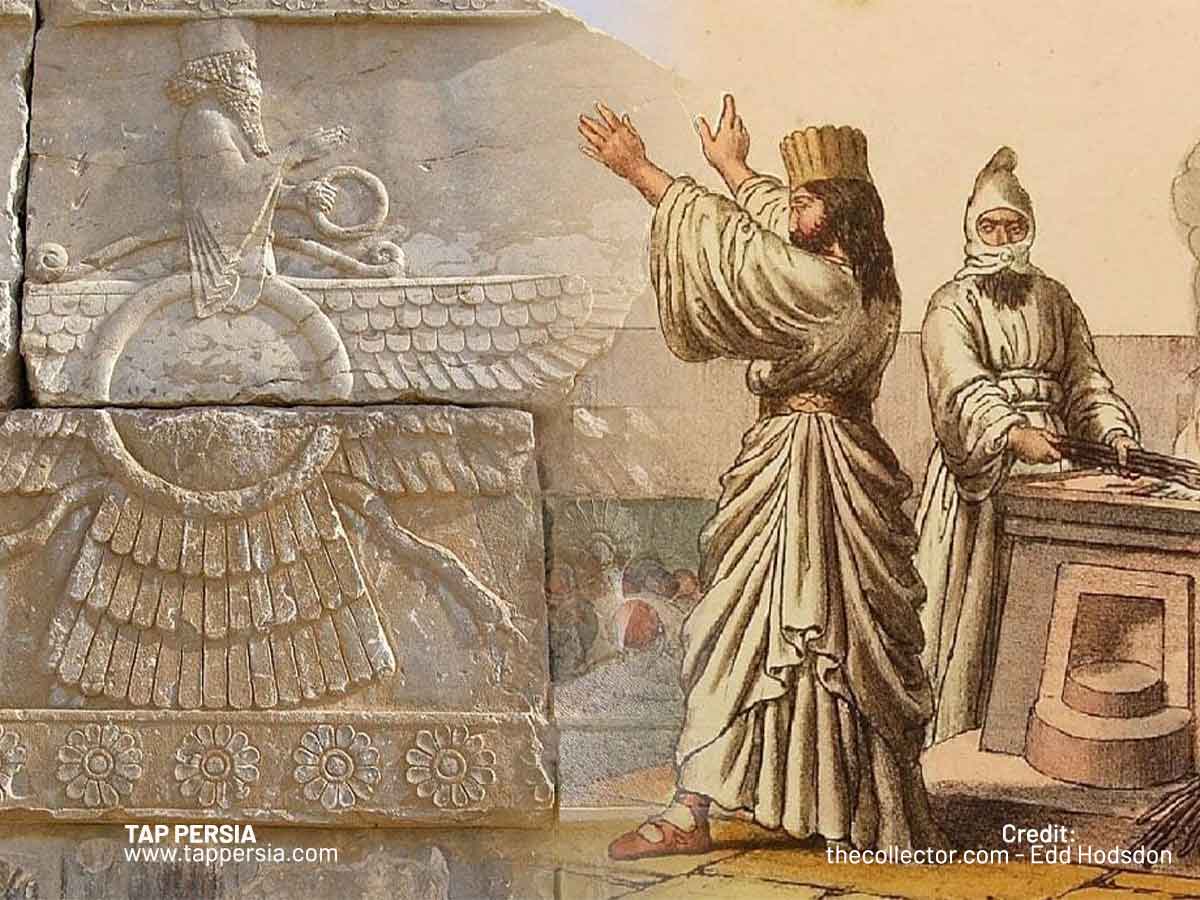
The earliest religious community in Iran that has endured to the current day is Zoroastrianism, which has a lengthy history in Iran extending back thousands of years. Zoroastrianism had been the main religion of Iranians before the Muslim Arab conquest of Persia (Iran). In Tehran, Kerman, and Yazd, ethnic Persians who practice Zoroastrianism predominate. Approximately 60,000 Zoroastrians are thought to reside in Iran.
Other Religions in Iran: Minorities and New Religious Movements
Baha’is, Christians, Zoroastrians, Yarsanis, Jews, Mandeans, Yazidis and Zikris are among the non-Muslim religions in Iran that are regarded as minorities. The top three minorities in Iran’s population have seats reserved in the parliament as well as formal recognition and protection. Other minorities, however, are not acknowledged by the regime. We shall discuss the following Iranian minority religions in Iran.
V. Baha’i Faith: A Monotheistic Religion Founded in 19th-Century Iran
The biggest non-Muslim religious group in Iran is the Baha’i faith. At least 300,000 Baha’is live in the nation, the majority of whom are concentrated in Tehran and the northern city of Semnan. In 187 nations, there are five to six million Baha’is living abroad. Unity is the foundational principle of the Baha’i faith. The Baha’is hold that all faiths in the world have a common origin and are essentially diverse branches of “one religion from God.”
Siyyid Ali-Muhammad, a Persian trader from Shiraz, created the Baha’i faith as a branch of Shiite Islam in the middle of the 19th century. He asserted to have had a heavenly revelation that God will soon send the final great prophet. Later, he adopted the Arabic name “Baab,” which means “gate.” Shiite clergy denounced his beliefs as heretical since Islam views Muhammad as God’s last prophet. In 1850, the Bab was captured and put to death by firing squad.
VI. Mandaeism: An Ancient Religion with Roots in Mesopotamia
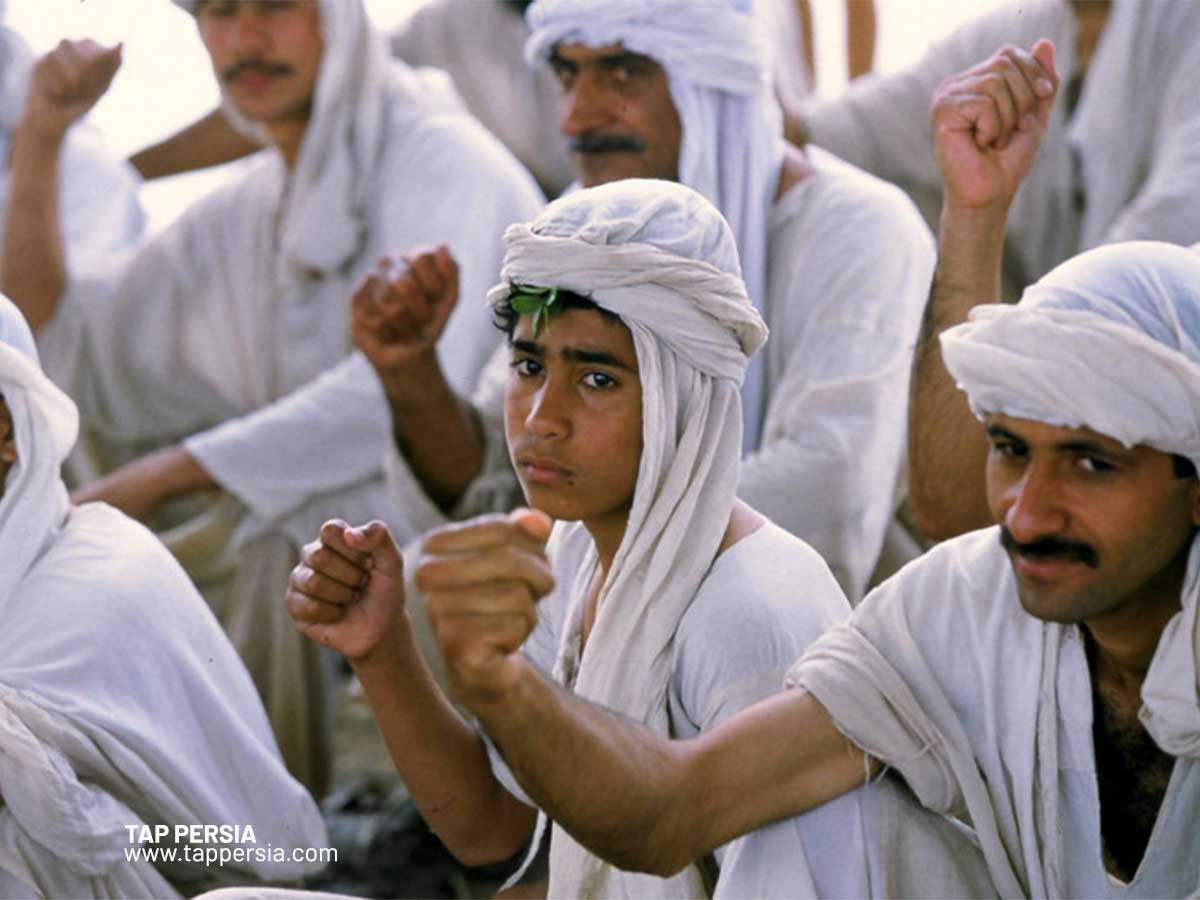
The majority of Iran’s 5,000–10,000 Mandaeans are thought to reside in the province of Khuzestan, which is close to the Iraqi border. Southwest Mesopotamia—today’s Iraq—is where the Mandaean faith initially appeared during the first and third century A.D. Due to the Mandaean religion’s reliance on the Karoun River for baptism ceremonies, the area is significant. Mandaeans practice a pre-Christian monotheistic religion based on John the Baptist’s teachings. Between the first and second century AD, they slowly migrated into Persia from the West. They follow a Gnostic tradition with ceremonies like those of the Zoroastrian and Nestorian faiths, which originated in ancient Mesopotamia. They hold a dualistic conception of reality that separates the World of Light (good) from the World of Darkness (bad). John the Baptist is revered by Mandaeans as one of God’s greatest prophets because of the healing miracles he performed, despite their belief that Jesus was a fake messiah.
Every Sunday, Mandaeans practice baptism, a fundamental principle of their religion. Immersion in moving water, which represents the creative life energy, is thought to help cleanse the soul. The Mandaean house of worship, known as a Mandi, is generally constructed along the banks of rivers or adjacent to other natural sources of running water since the devout must live close to water to practice these sacred ceremonies.
VIII: A Syncretic and Mystical Religion with Kurdish Origins
There are thought to be three million Yarsanis in Iran, commonly known as Ahl-e-Haqq or People of the Truth. Yarsanis are almost exclusively Kurdish and are concentrated in western Iran’s Kurdish-majority regions like Kermanshah and Lorestan. Iraq is home to between 120,000 and 150,000 more people. Yarsani religion is not acknowledged by the Iranian government, which has labeled it a “misguided cult.” This is one of the most unique religions in Iran. Yarsanis practice a syncretic faith that was established in western Iran by Sultan Shahak in the late 14th century.
Shahak’s supporters thought that he was one of God’s seven incarnations. His teachings included principles and practices from other religions, including Zoroastrianism and Shiite Islam. Iranian Yarsanis are frequently seen as devotees of Ali, the founding imam of Shiite Islam, whom they regard as a different manifestation of God. They are therefore viewed as a heretical group in Shiite Islam. Since they do not follow customary Islamic practices, many Yarsanis dispute that description.
The Kalam-e Saranjam, Yarsan’s primary religious literature, contains the ultimate truth, which is the organization’s basic belief. According to Yarsanis, after 1,001 reincarnations, souls are purified. Jams are religious gatherings that take place once a month for worship.
IX.Yazidism: A Syncretic Religion with Kurdish and Mesopotamian Roots
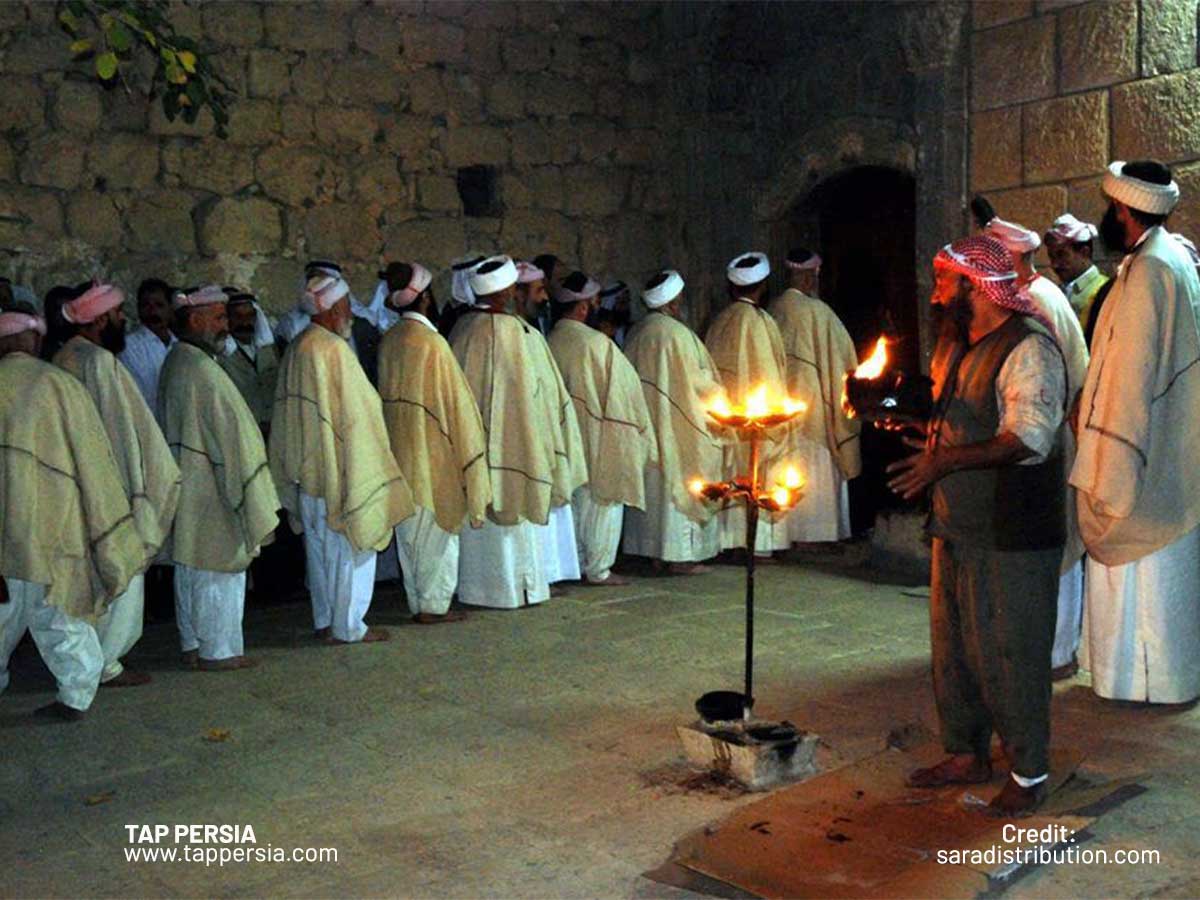
Despite being dispersed and having a population of only 200,000 to 1,000,000, the Yazd people have an organized society with a chief sheikh acting as the supreme religious leader and an emir, or prince, functioning as the secular authority. The first man that God created was supposed to be faultless and immortal, according to Yazidi belief. Tawusi Malek, on the other hand, disagreed with God’s choices, arguing that since Adam was going to procreate, he could not be regarded as flawless and eternal. Additionally, he must consume wheat, which was against the rules. God then informed the Peacock Angel that he would leave the choice up to him, putting the fate of the planet in his hands. The Yazidis then began to reproduce after Adam consumed the wheat and was banished from heaven.
As a result, Yazidi prayers were primarily addressed to Tawusi Malek as the direct conduit between God and humanity.
X.Zikri: A Sufi-Inspired Religion Practiced in Balochistan Province
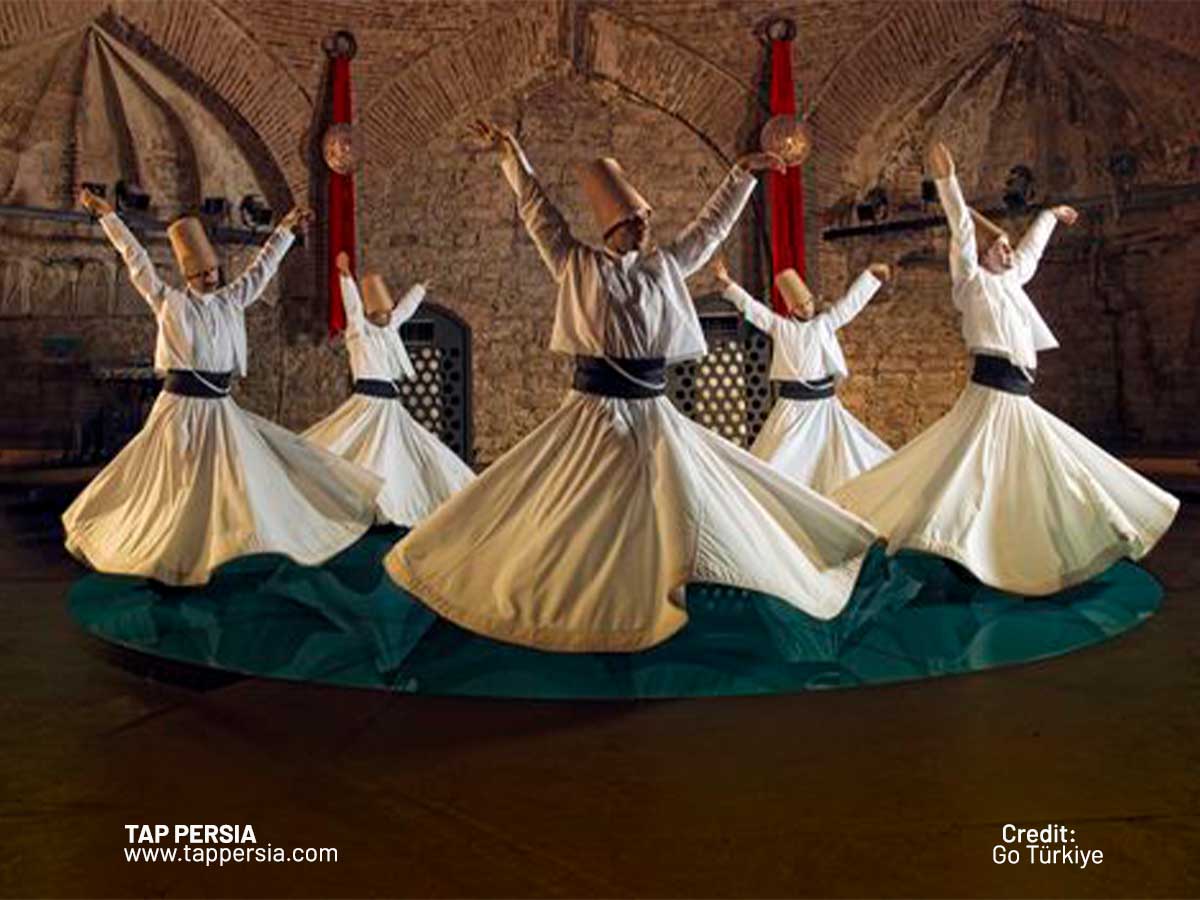
Balochistan is the home of the minor Islamic sect known as Islam Zikri. The fiqh is followed by around 750 000 people. Imam Mehdi, a person from the 15th century, is the central figure on whose teachings the faith is built. The Zikris follow a very different kind of Islam than the majority of Muslims. Zikris offer five times daily (Zikr) prayers. On the twenty-seventh night of Ramadan, they conduct Ziarat at the shrine Koh-e-Murad, which is located in Turbat (Baluchistan).
The name Zikri is derived from the Arabic noun zikr, which generally denotes remembrance of Allah. This is indicative of Zikri devotion, which focuses on reciting Islamic creeds. In Balochistan, one may find a minor Islamic group known as Islam Zikri.
Imam Mehdi, a figure from the fifteenth century, and his teachings established the foundation for the faith. In stark contrast to other Muslims, the Zikris follow a very particular kind of Islam. The daily Zikr prayers are performed five times. In Turbat, Baluchistan, on the twenty-seventh night of Ramadan, they conduct Ziarat at the Koh-e-Murad shrine. The name Zikri derives from the Arabic word zikr, which generally denotes remembering Allah. This describes the Zikri devotion, which promotes reciting Islamic creeds.
Statistics on Religious Belief and Religiosity
| Source | Year | Results |
| International Crisis Group | 2005 | 99.6% of Iranians identified as Muslims, and 89% of them identify as Shia, practically all of them are Twelvers. |
| Pew Research Center | 2009 | Shi’ites make up about 90–95% of Iranian Muslims. |
| CIA World Factbook | 2011 | Iranians are predominantly Muslim, with 90–95% of them believing to practice Shia Islam, the official state religion, and 5–10% believing to follow Sunni and Sufi Islam. |
| Pew Research Center | 2016 | In Iran, 99.8% of people identify as Muslims. |
| Gallup Poll | 2016 | 86% of Iranians who participated in “a combination of telephone and in-person interviews” reported being religious, which has increased from 76% since 2006. |
| Pew Research Center | 2018 | Religion holds a significant place in Iranians’ life, according to 78% of them. The same poll also revealed that 38% of Iranians regularly attend religious sessions. |
| Pew Research Center | 2019 | The second-highest rate of daily prayer in the Asia-Pacific region, ahead of Indonesia (84%) and after Afghanistan (96%), is found among Iranians who pray 87% of the time. |
| World Value Survey | 2020 | Iran’s population is 96.5% Muslim. |
| GAMAAN | 2020 | An online survey of 50,000 Iranians revealed that 32% of them identified as Muslims, 5% as Sunnis, and 3% as Shia Sufis. In addition to the 22.2% of respondents who said their religion was considered “None,” 8.8% said they were atheists, 5.8% said they were agnostics, and 2.7% said they were humanists, other responses included 8.8%, 5.8%, and 2.7%. Zoroastrianism (7.7%), Christianity (1.5%), the Bahái Faith (0.5%), and Judaism (0.1%) were among the minor faiths that some Iranians claimed to follow. 7.1% more people who responded said they considered themselves to be “spiritual.” |
What is the main religion in Iran?
In addition to designating Twelver Ja’afari Shia Islam as Iran’s official religion, the constitution refers to the country as an Islamic republic.
What are the top 3 major religions in Iran?
Islam, Christianity and Judaism are the 3 main religions in Iran.
What was the religion of Iran before Islam?
Up to the Muslim invasion of Persia in the seventh century A.D., Zoroastrianism was the official religion of three Persian kingdoms. Parsis, or Zoroastrian exiles, left Iran to avoid persecution at the hands of Muslims.
Is Iran Sunni or Shia?
Because Shia Muslims outnumber Sunnis by a wide margin in Iran, it is unusual among Muslim nations.




Comment (0)